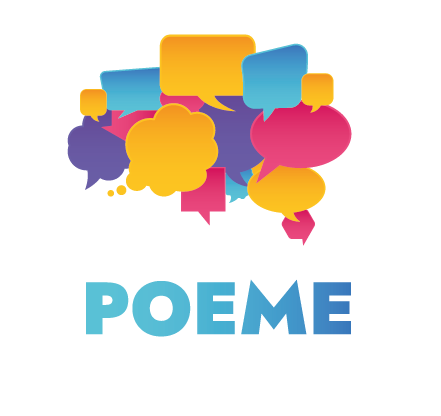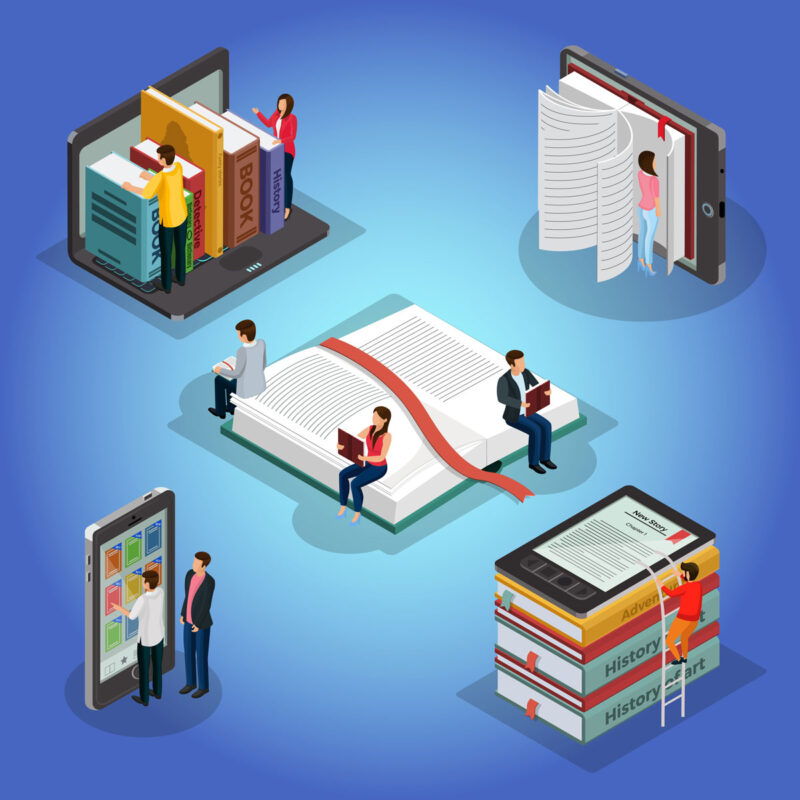After practical worksheets, e-books are the next step in the POEME project’s quest to upskill school education staff and students towards more resilience, adaptation to change, and agility that could enable innovative practices in second language acquisition and familiarization with cultural heritage.
During the last 6 months, the POEME partnership worked on the content, but also the visual and technical aspects of the e-books.
Each e-book is divided into three levels of difficulty, level 1 corresponding to the A1 level of the CEFR classification, level 2 to A2-B1, and level 3 to B2. Each level has its colour code. The content is getting longer and more complicated as the level goes up. This way, level 1 contains the text of 800 characters, which results in approximately one sentence per page. The language used in the first level is very simple, and accessible for beginners. Each story in level 2 has approximately 1500 characters, resulting in one long, or two sentences per page. Finally, level 3 is characterised by the longest, most developed text, resulting in 3 or more complicated sentences per page. Each level has a maximum of six difficult words selected by the partnership as the ones that can pose a problem to the readers, and whose acquisition can considerably enrich the readers’ vocabulary. Difficult words are highlighted with an adequate colour at each level. For better visual identification, they have also been written in uppercase letters.
Each word has been associated with a simple, icon-style illustration that appears when a reader clicks on the word in the text part of each level. The illustrations along with the corresponding words can be found at the end of each level in a form of a glossary.
To improve the pronunciation of our readers, we also inserted an audio version of the text content. On each page, an audio button can be found. When clicked, it will play a read-out version of the corresponding text. We also used this solution in the glossary.
During the visual creation, the most important aspects were the ones regarding e-book accessibility. In the conceptual phase of this part of the project, we created a couple of options with slight differences, like the font, font size, and colours used in all the e-books, that created a coherent visual identity. As an effect of discussions between the partners of the project, we made a collective decision to use the Open Sans font that, along with Arial, Calibri and Verdana, is an accessible font that is easy to read for all the users, especially the ones with learning disabilities like dyslexia or dysgraphia. In the text blocs, we decided not to use italics or underlining. The only visual modification we decided to introduce is an uppercase difficult word presented in a colour adequate to the level (level 1 corresponding to blue, level 2 to violet, and level 3 to pink). The text is presented on off-white pages, which considerably improves readability. To achieve a maximal level of comprehension, each sentence is accompanied by an image. This way, even if the reader does not understand the text after the first reading, the images can give him some hints.
As one of the results of this phase of the project, we also created an explanatory sheet for educators that will let them create their e-books. To maximise the educational value of POEME project, each partner also organised a webinar or a face-to-face session with interested educators and/or students, where they presented how to create e-books with one of the chosen software. The three software we privileged in this project is SIGIL, Bookcreator, and Pubcoder. The 10 e-books whose creation we described herein were created with Pubcoder.
Webinars and face-to-face sessions were organised to make it possible for the participants of the project (educators and/or students) to ask all kinds of technical questions, but also to see the process of creation of an e-book and to give them the necessary tools and digital skills to do so on their own.
All 10 e-books were translated into all languages of the partnership: French, Greek, and Portuguese. Therefore, they are accessible in 4 languages in total, English being the default language of the project. They will soon be accessible in the Resources – IO3 part of this website.





